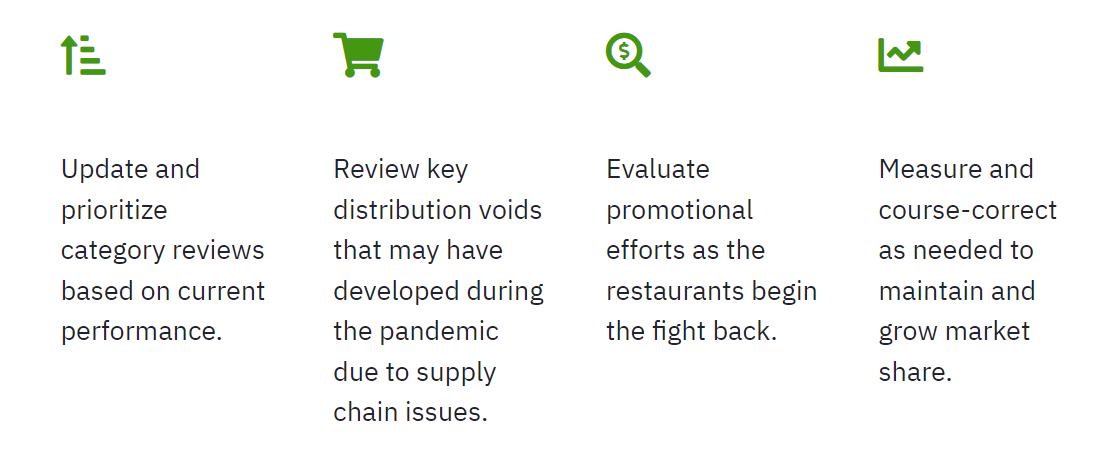Why COVID-19 Will Change Consumer Habits for Good
Right now, as more cities and states are easing restrictions, vaccination rates increase, and people find a hybrid of pre-and-post COVID life, the question on retailers’ minds is how COVID is changing consumer behavior for health and wellness products, and beyond?
Chances are that consumer behavior post-COVID won’t be identical to pre-COVID behavior because some parts of our daily lives will shift, whether that’s keeping health top of mind even more than before or having a hybrid work schedule. The domino effect that began with COVID and its necessary restrictions changed shopping behavior for the last year going to continue for the foreseeable future.
To paint a more complete picture of shifts in consumer behavior, SPINS experts looked at a year’s worth of data from the SPINS Natural Enhanced Channel and Conventional Multioutlet Channel (powered by IRI) beginning with the start of restrictions last spring and ending 52 weeks later.
These are the 4 consumer habits you should keep your eye on as we enter the post-lockdown phase of shopping.
1. Online Spending Is Here to Stay
Online shopping isn’t exactly new, but prior to COVID it was slowly gaining traction in the grocery space. While the overwhelming percentage of purchases still happen in store, the pandemic accelerated the online shopping trend and took more share of wallet. In April 2020, internet shopping comprised 4.5% of purchases but that number had risen to 5.0% by December 2020 and January 2021.
The pandemic forced many retailers to adapt their store experience to reach customers who were hesitant to be indoors with strangers. As a result, many stores adopted online ordering, curbside pickup, and third-party delivery services. Of course, some businesses were already using these tools, particularly big box stores, but now shoppers are used to the convenience and will rely on these options going forward.
2. Natural Products Have a Loyal Customer Base
When COVID began and products were flying off shelves, no one knew if natural products were just along for the ride or if they would have staying power with new customers. A year later it’s clear that the initial pantry stock-up might’ve boosted their sales at the time but even now, when conventional products are in stock and easy to find, natural products are enjoying a sales bump.
In April 2020, natural products saw a year-over-year increase of 19.2% dollar sales, according to IRI All Outlet Panel Data (enhanced with SPINS attribution). In May it jumped to 27.2%–which isn’t surprising. However, as shoppers stocked less throughout the year, natural products continued to outperform their conventional counterparts. By January, natural products were still up 15.7% compared to conventional products at 13.5%. We know shoppers still care about staying healthy and are incorporating products with functional ingredients into their diets, so it’s becoming clear that natural shoppers are not going to abandon their favorite items as they find a new normal.
3. Geography Affects the Return to Normal Spending
To get a sense of what today’s market looks like compared to last year’s atypical figures, we looked at the most recent 12 weeks of sales vs the previous 52 weeks for all channels. We found:
- Regional and independent retailers in the North Central and South are growing compared to last year.
- Natural Enhanced sales are flat in the West and only down 1.9% in the North Central area, but showing much sharper declines in the Northeast and South.
- In nearly every channel, 2021’s 12-week sales were down compared to 2020 but higher than 2019’s
Nothing about the last year has been uniform, as we saw lockdown restrictions and consequently, shopping behavior vary by location. Now that we’re on the other end, with restrictions lifting on various timetables, sales continue to differ throughout the country.
What we do know is that 2020’s historic sales won’t be replicated this year, so everyone will see their year-over-year sales go in the red eventually (if not already) but that doesn’t mean they’re lower than the pre-COVID figures either.
4. Shoppers Still Rely Regional and Independent Grocers
Regional and independent grocers have a reputation as innovative leaders in the grocery space. Their customers expect the latest products and help set the trends that eventually reach conventional and mainstream outlets. That reputation hasn’t changed in light of COVID, and it might even be fortified as a result.
Looking at the performance of 3 SPINS channels across the last 52 weeks, we find that Regional and Independent Grocery has shown the most growth by a wide margin. Total sales in RIG are up by 16.6%, whereas Natural Enhanced is up 10.6% and Conventional Multi Outlet is up 9.4%. That strength is also evident when you look at products positioned as Natural (up 16.7%) and Specialty and Wellness (21.1%). Clearly, shoppers are eager to find the innovative products they can’t yet get anywhere, and they have the added benefit of staff who know these items firsthand, offering insights that they can’t find in other stores.
What the Changes in Consumer Habits Mean for Retailers
With trade shows coming back and new item releases that were postponed during the pandemic, the market is in for an exciting second half of the year.
Retailers should be ready to meet new habits and expectations when the masks come off. Here are four recommendations for retailers from Simon Cutts, Director of Retail Partnerships at SPINS:

To dive deeper into these findings so you can evolve stay ahead in 2021, get the full Unmasking a Year of COVID-19 Data report and related webinar recording below.

“Take a look at your market performance and see where the gaps are to really dust off those category review calendars and get ready for some innovation.”





